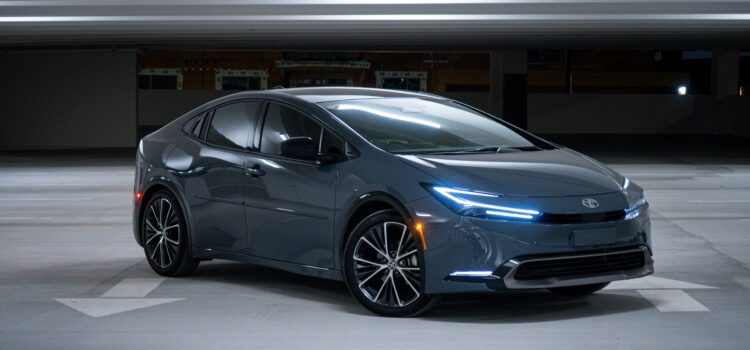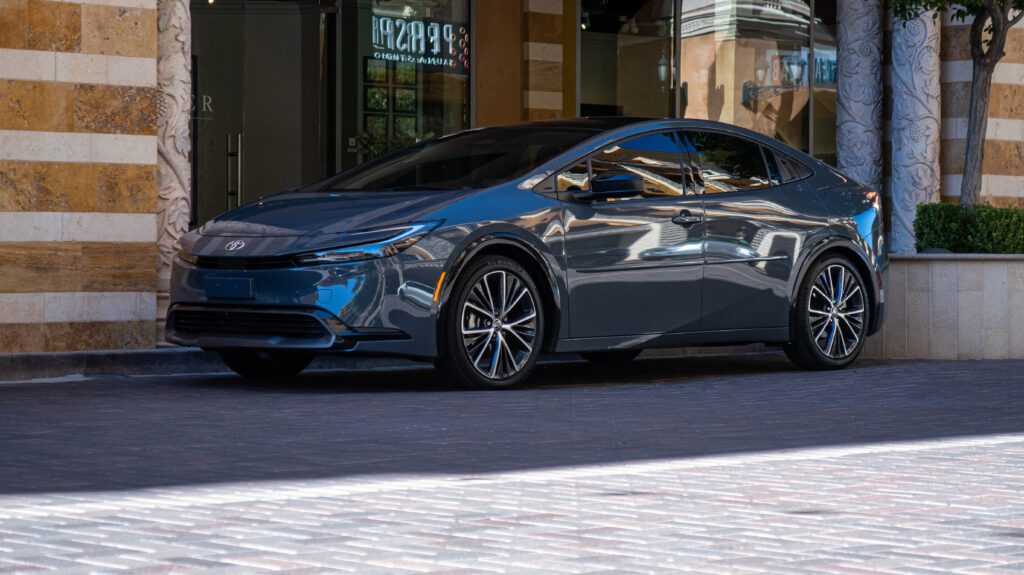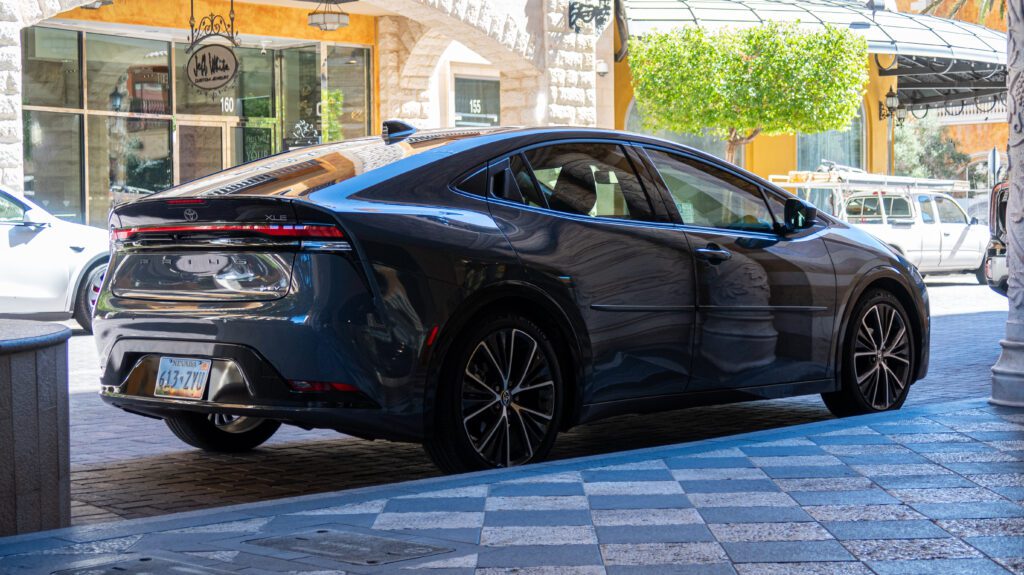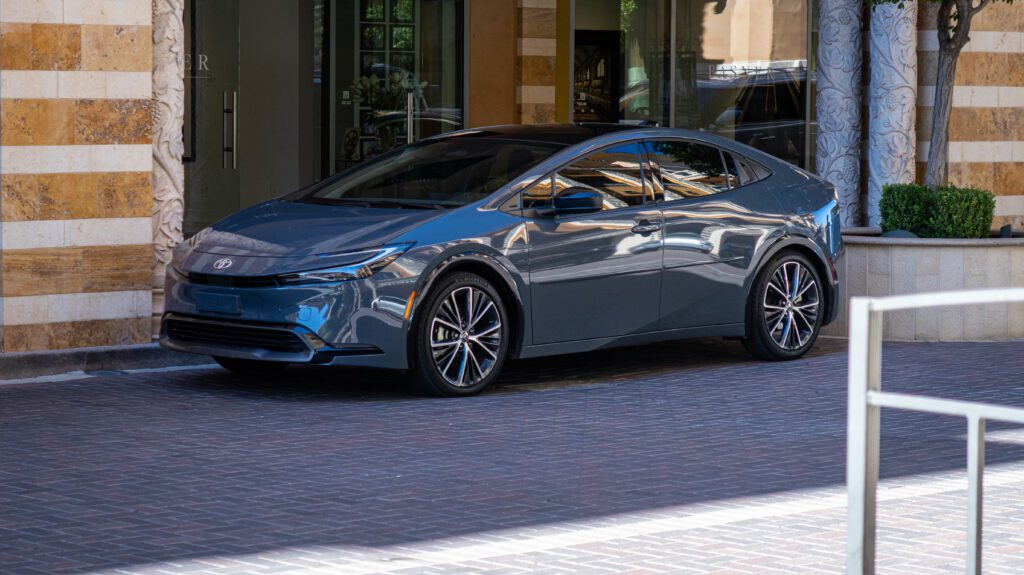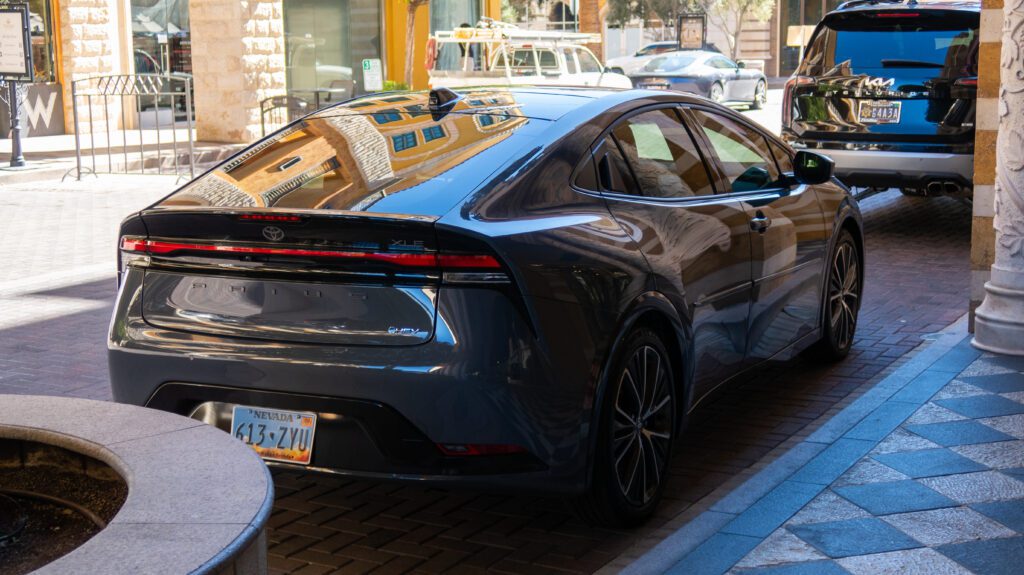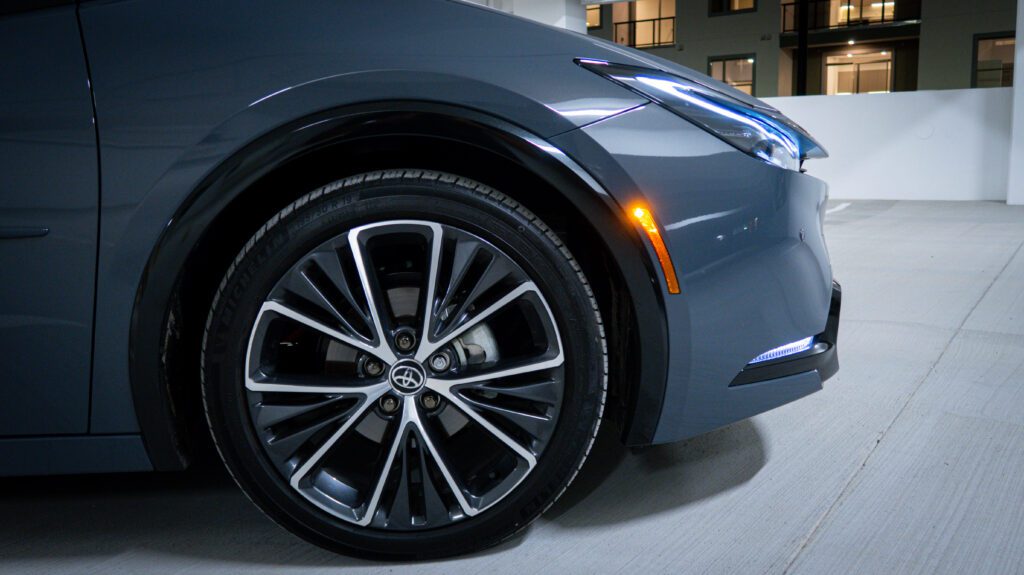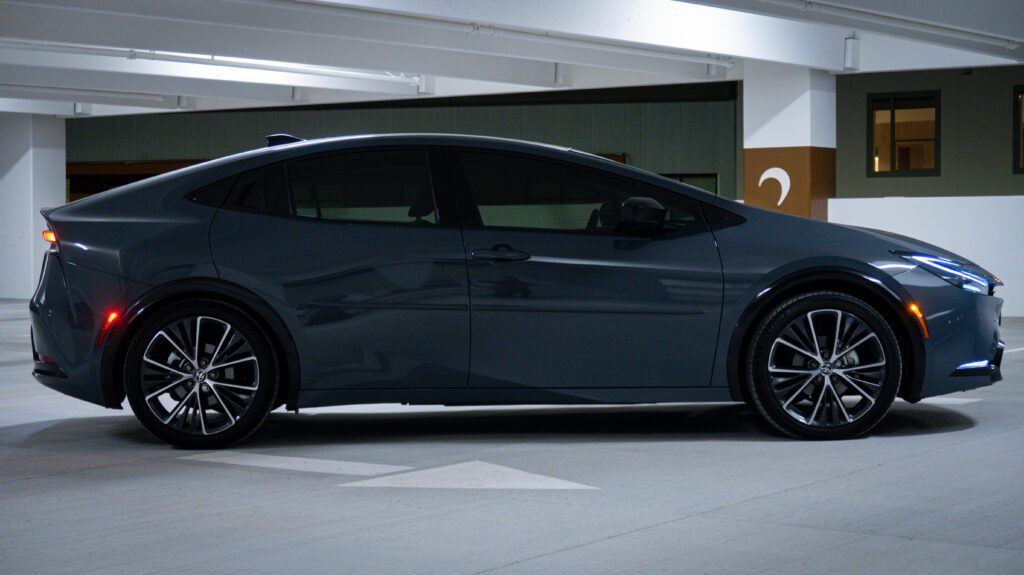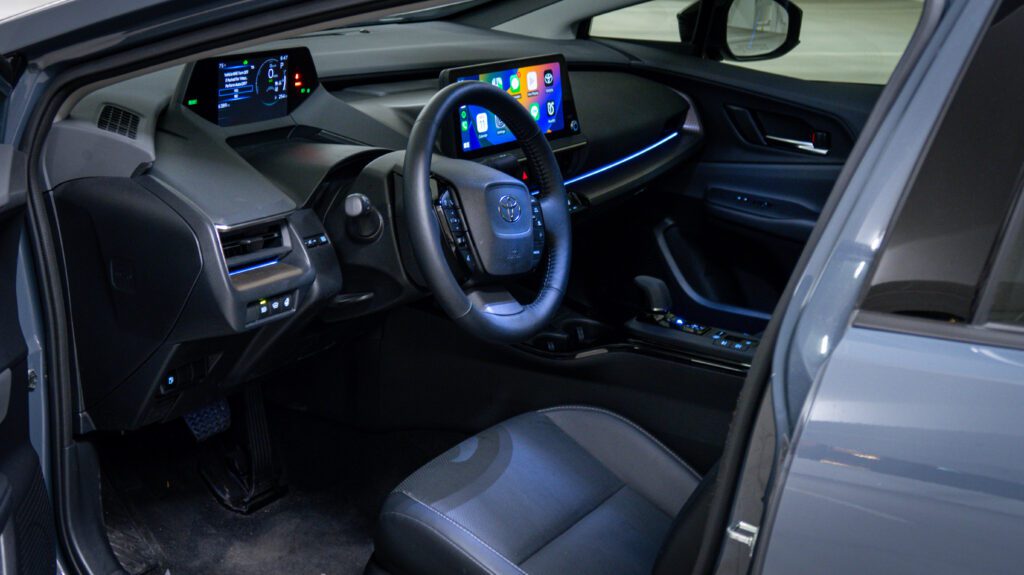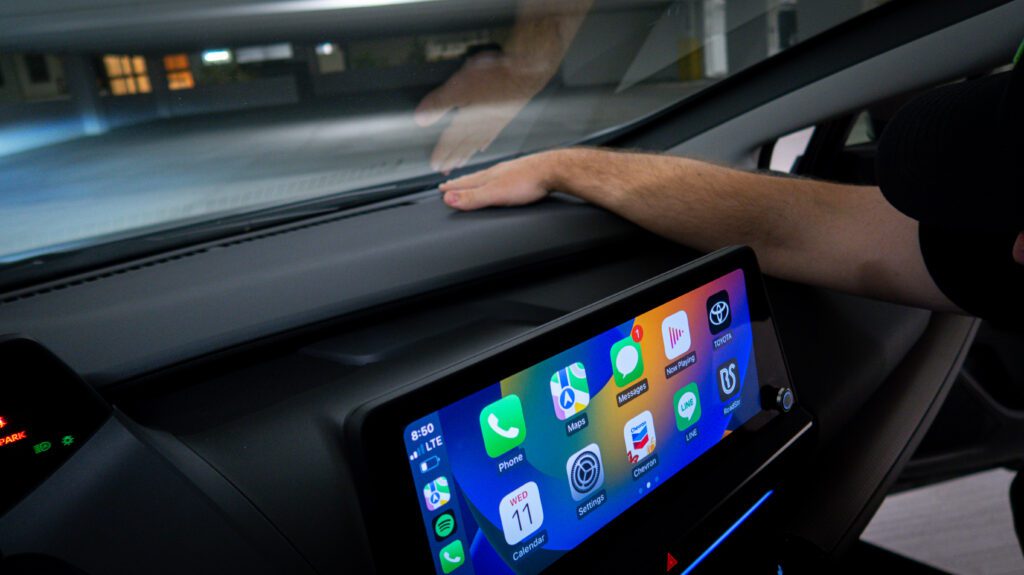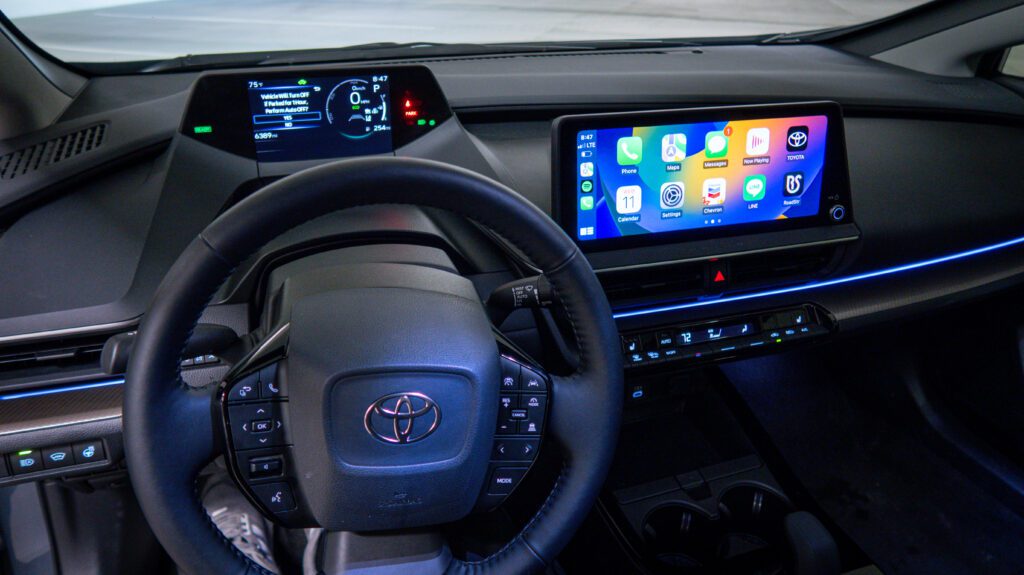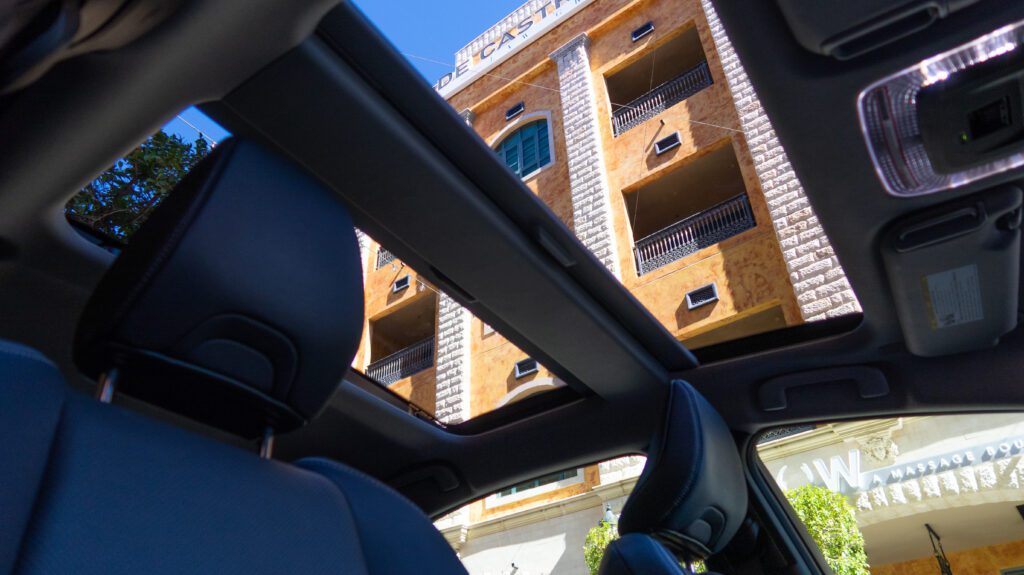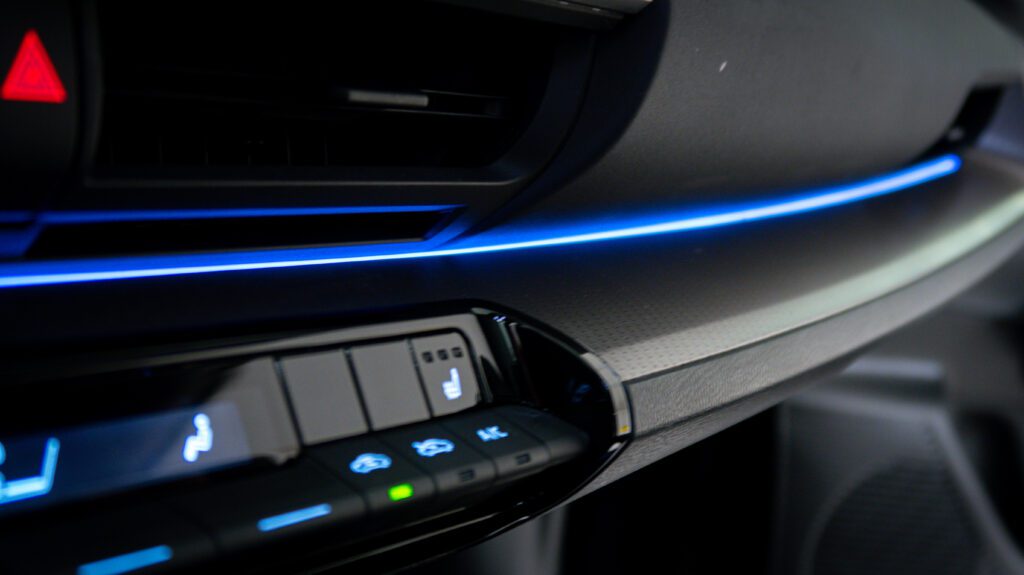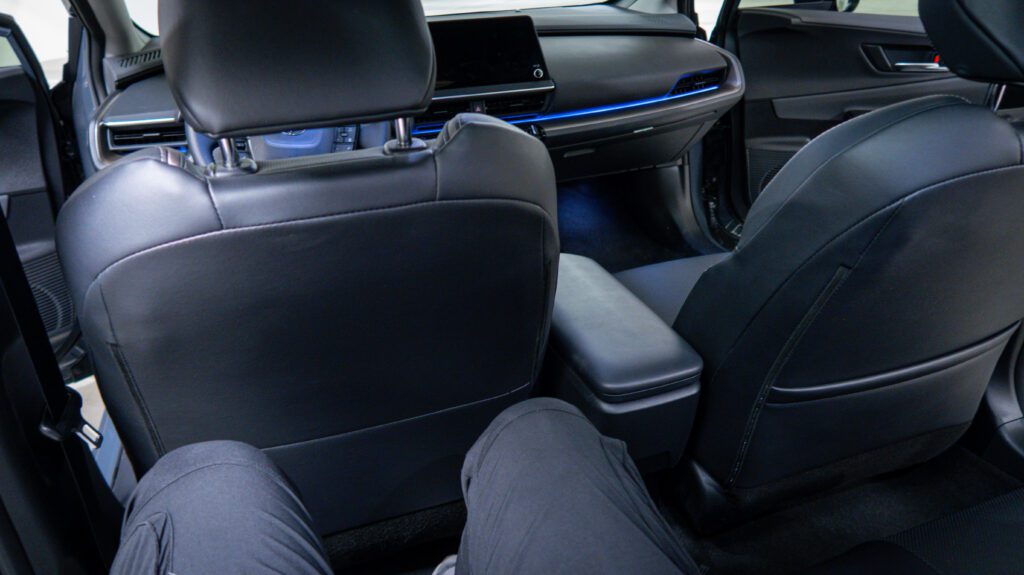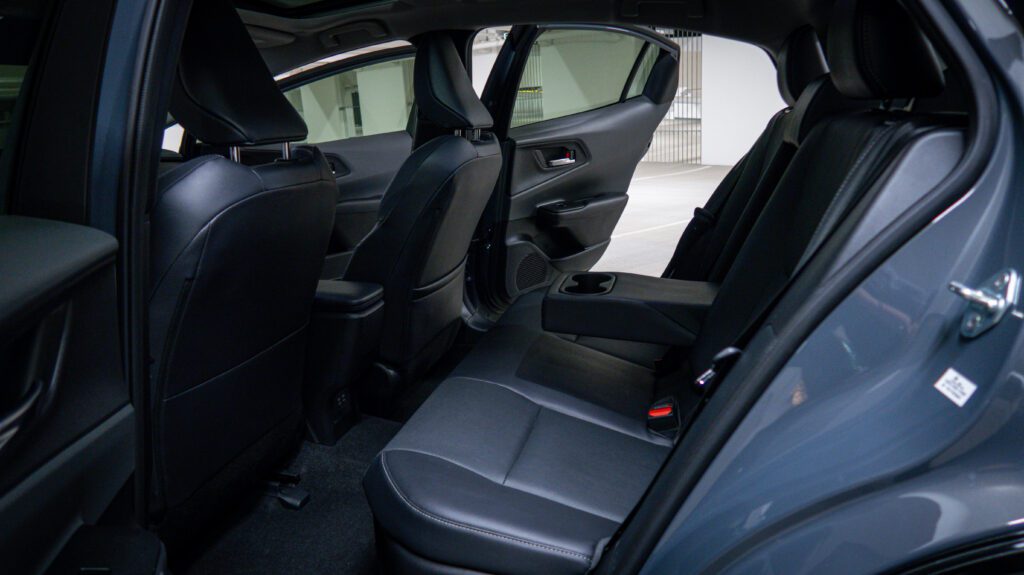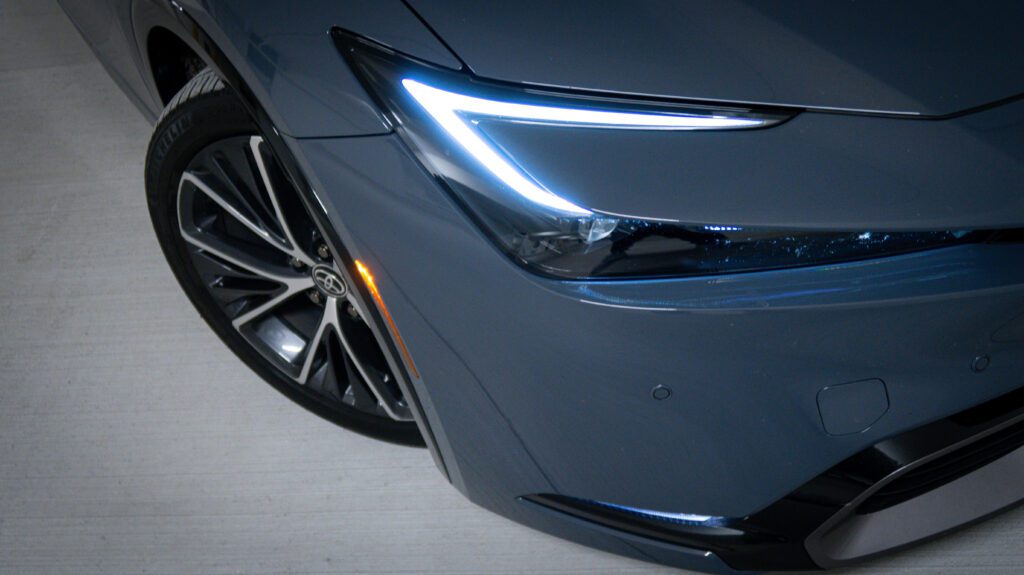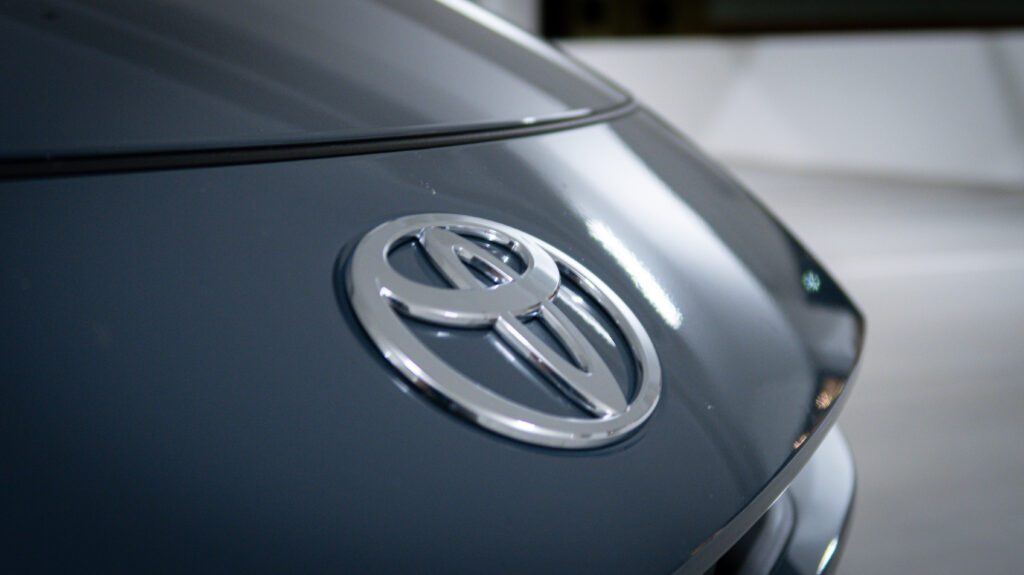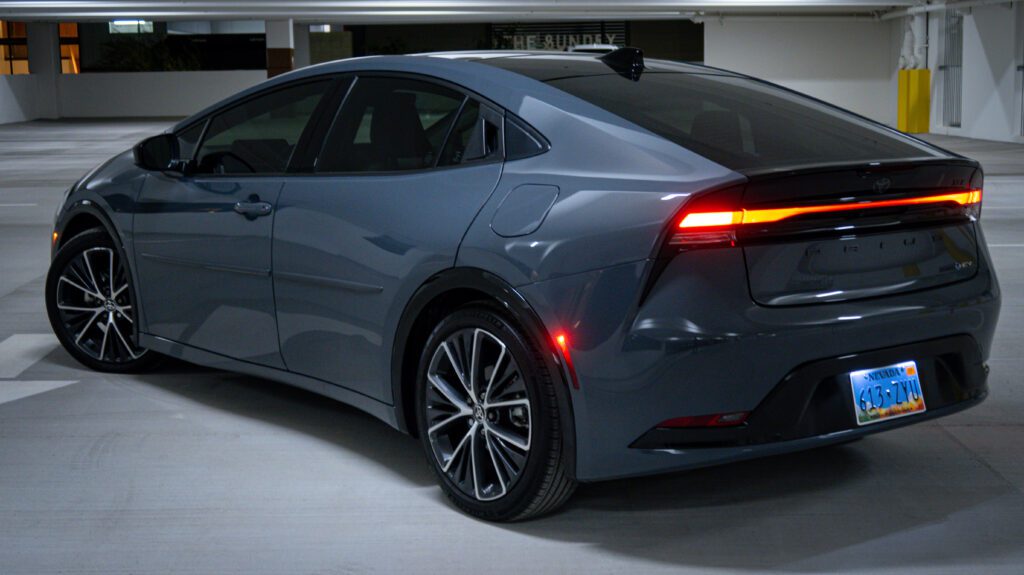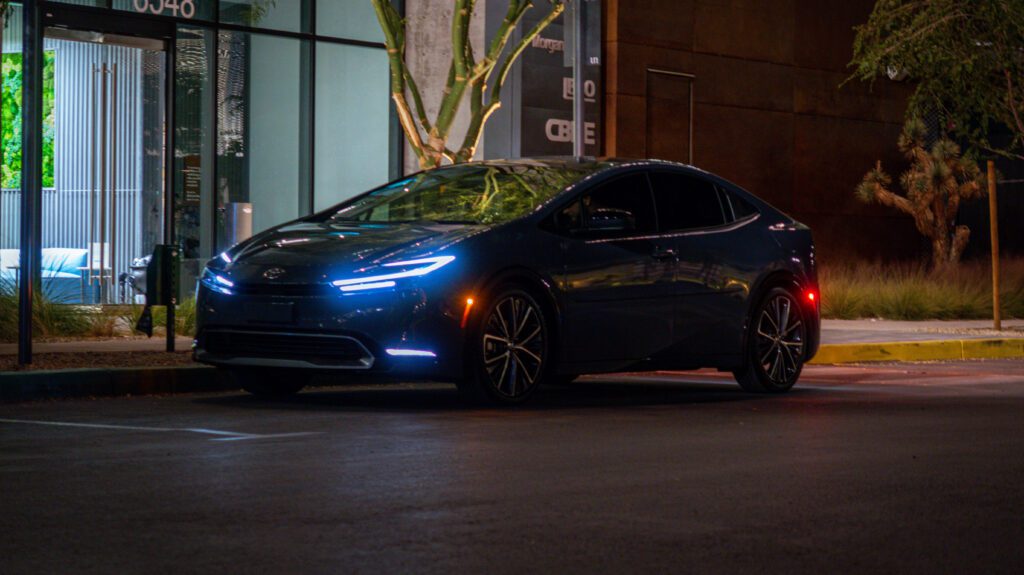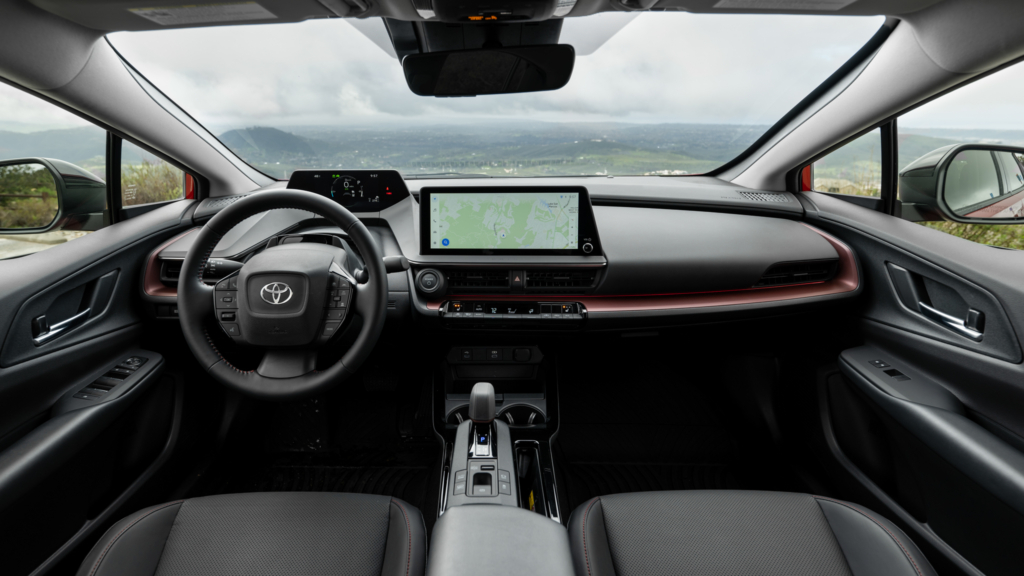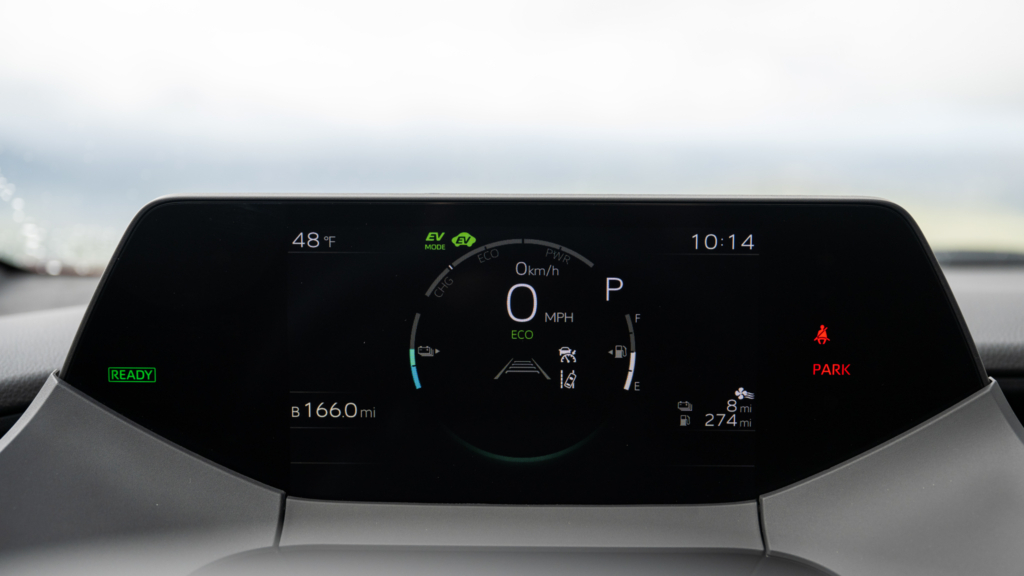Toyota Prius Prime review: Look how far we’ve come with toasters on wheels!
Growing up, I earned my learner’s permit driving my mother’s absolutely ratchet first-generation Honda Civic Hybrid. Remember that piece of boring, banal, borderline-indistinguishable, and certainly unmemorable mediocrity? Hopefully not. However, a couple of years after I stepped up to adulthood and earned my license, my mom bought a 2008 Toyota Prius. In those days, the purposefully fugly second-gen Prius served as something of a West LA status symbol but also served the fam well as a damned good car: getting superb mileage, with plenty of room for pets and gear, and over the years, proved reliable as the day is long (once we installed a cat shield to foil constant thievery, anyhow).
But more about the old Prius later because last year—boom!—Toyota hit us with a total redesign, a radical revamp, a veritable resuscitation of the entire concept of the commuter hybrid. And now, I finally got the chance to revisit those early days of hybrid driving in a 2024 Prius Prime, the plug-in version that best suits this West LA commuter crowd.
Skip to section:
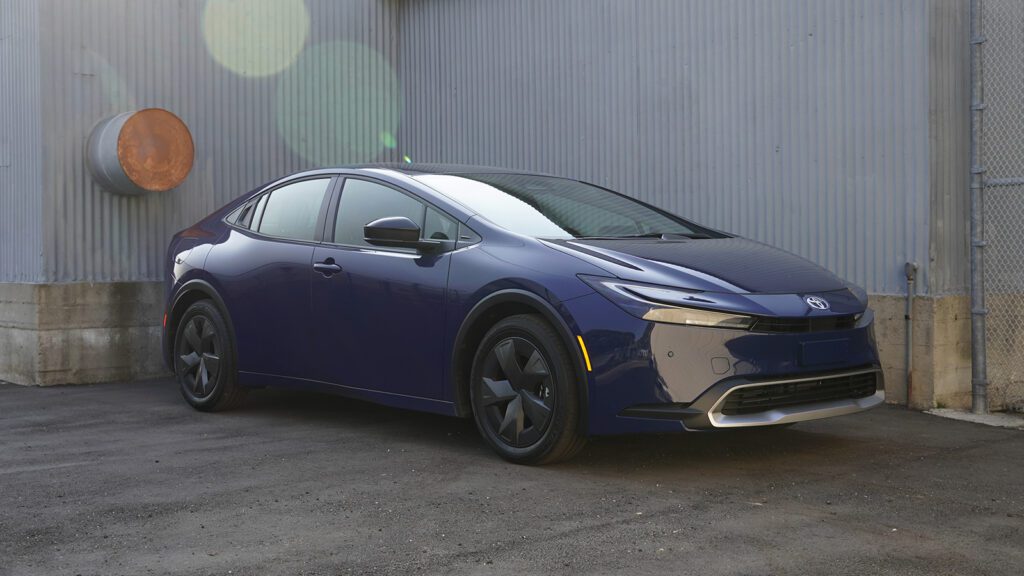
Price and specs
| Base price: | $32,975 |
| As-tested price: | $34,434 |
| Engine: | 2.0-liter inline-four with dual electric motors |
| Transmission: | Single-speed + CVT |
| Drivetrain: | Front-wheel drive |
| Power: | 220 horsepower combined |
| Torque: | 139 pound-feet |
| Weight: | 3,461 pounds (3,571 pounds as-tested) |
| 0-60 mph: | 6.7s (11.2s in full EV mode) |
| ¼-mile: | 15.1 seconds @ 94 mph (hybrid), 18.7 seconds @ 75 mph in (full EV) |
| Top speed: | 112 mph |
| MPG: | 50 city, 47 highway, 48 combined |
| Battery capacity: | 13.6-kWh lithium-ion |
| All-electric range: | 44 miles (39 miles as tested) |
Prius Prime exterior design
Toyota’s advertising campaign leading up to the LA Auto Show debut of the new Prius ended up coming across as a bit funny since, even considering the svelte and futuristic styling, nobody will ever consider this common car a “black sheep.” And yet, damn if that new design doesn’t hit the nail on the head. Just look at the pics! Anyone remember the first-gen Echo twin? My, how far we’ve come.
Now, my boss here at Acceleramota has already covered the “base” (non-Prime) Prius, so go ahead and click back through his review before continuing to learn more about my time with the Prime.
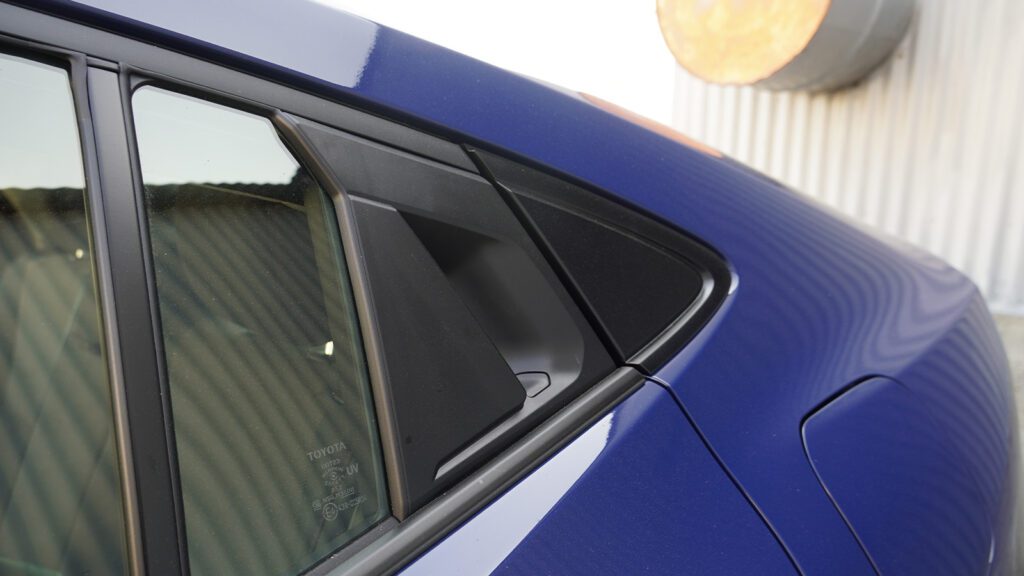

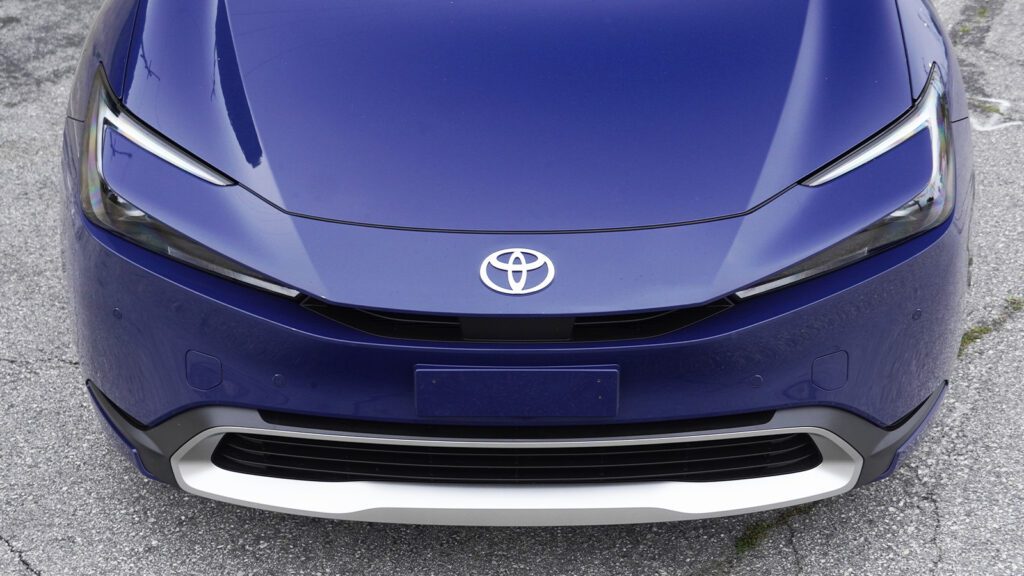
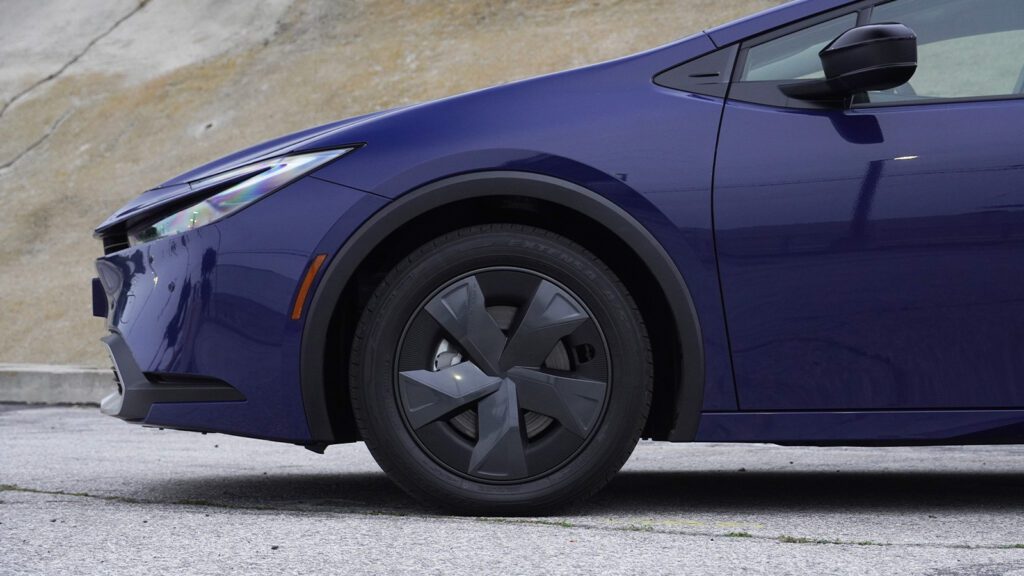
The only thing I might add, in terms of exterior styling, is that I parked the Prime next to my mother’s still-cranking, sun-faded, and bird-shit-splattered 2008 Prius just for comparison—and the new car’s roofline looked around five or six inches lower! So much so that I actually Googled the official measurements. It turns out the 2024 model rides exactly 2.8 inches shorter. Not as much as my eyeballs perceived, in fairness, but a serious statement about how stellar styling can make so much of a difference in a car’s profile and presence.
| What’s hot? | – Some style, at last – Plug-in hybrid system allows for choice at a reasonable cost – Simple, stark interior – Noticeably improved aerodynamics – Vastly improved performance and handling |
Prius Prime pricing breakdown
The non-Prime that Jeric drove starts at $27,950, and adding the plug-in capabilities bumps the price up by $5,025. The Prime comes in three trim levels, with the SE at the bottom of the gradewalk sporting manually-adjustable fabric seats, an eight-inch infotainment touchscreen, a slicktop roof, and 17-inch wheels for max range. Stepping up to the XSE swaps on 19-inch wheels, which result in slightly less electric range and diminished fuel economy stats, plus a parking assist system. And the XSE Premium, topping the lineup at a $39,670 MSRP, comes with a 12.3-inch touchscreen and the choice of a glass roof or an optional solar panel roof to soak up photons on sunny days.
As tested, my SE tester’s window sticker reads just about as basic as possible. Options limited to a cargo mat in the rear, door sill protectors, and wheel locks result in a $34,434 price tag—almost how I might spec my own Prius Prime. Leather or faux-leather seats might be nice for my pets and the generally filthy life I lead.
Prius Prime interior and tech
As on a non-plug-in Prius, most of the interior and tech options come standard depending on the Prime’s trim levels: both the eight-incher and the larger screen support wireless Apple CarPlay, thankfully. For Prime specifically, though, the small gauge cluster display needs to combine EV and ICE readouts. The resulting barrage of constantly shifting charge levels, range estimates, so-called “EcoScore” and “EcoZone” stats, and driver aid widgets all get lost in their own wash, to an extent.
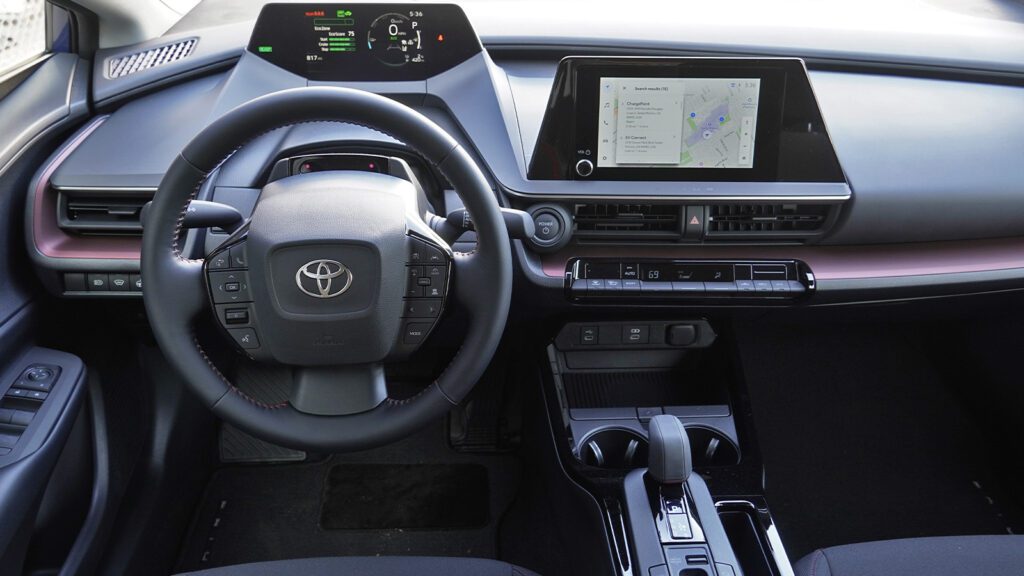
Toggling to a simplified screen cleans up some of the mess, and really, just drive more slowly to max out the range in either HV (hybrid) or EV (fully electric) mode. Otherwise, the rest of the interior—despite a lower roofline—comes across as spacious and simple, with plenty of leg and headroom for tall drivers (even in the backseat).
And kudos to Toyota for delivering a straightforward design exactly as it should be: just a toaster that toasts toast as efficiently as possible.
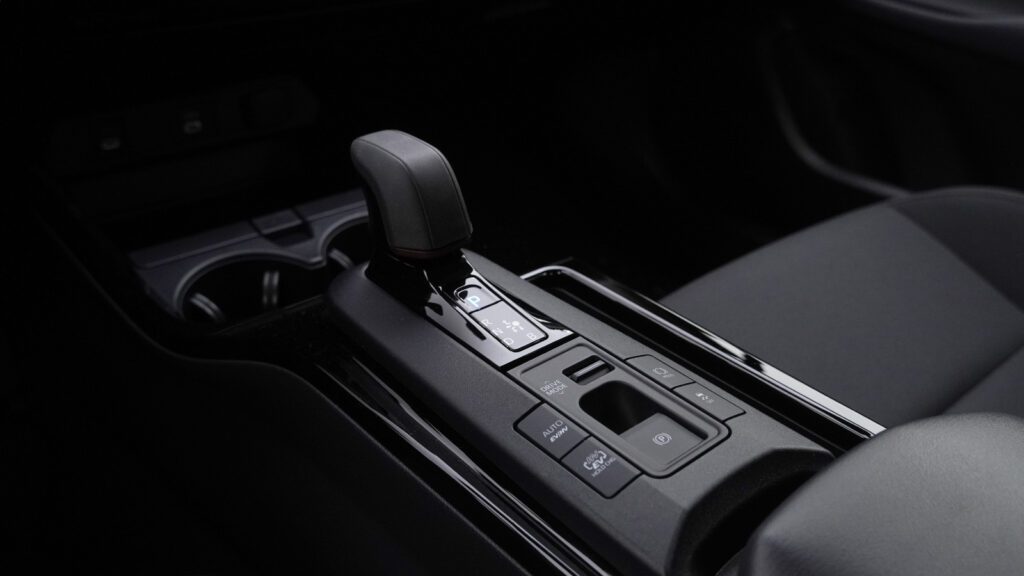

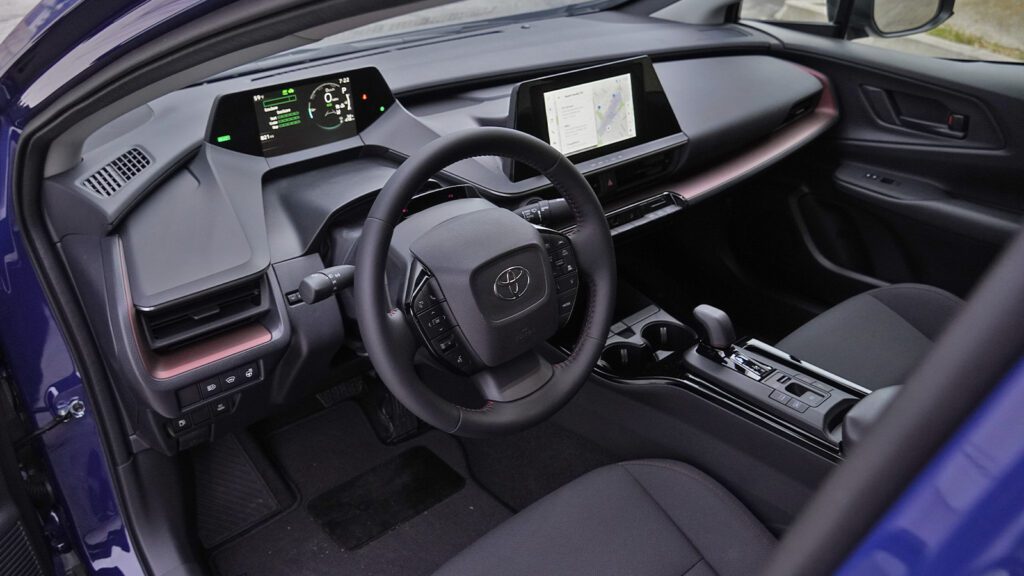
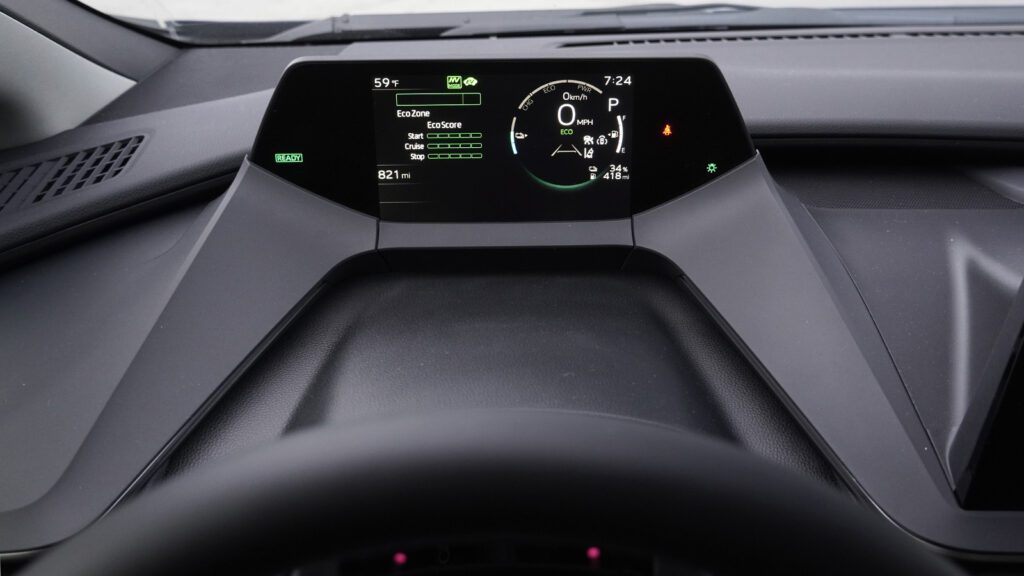
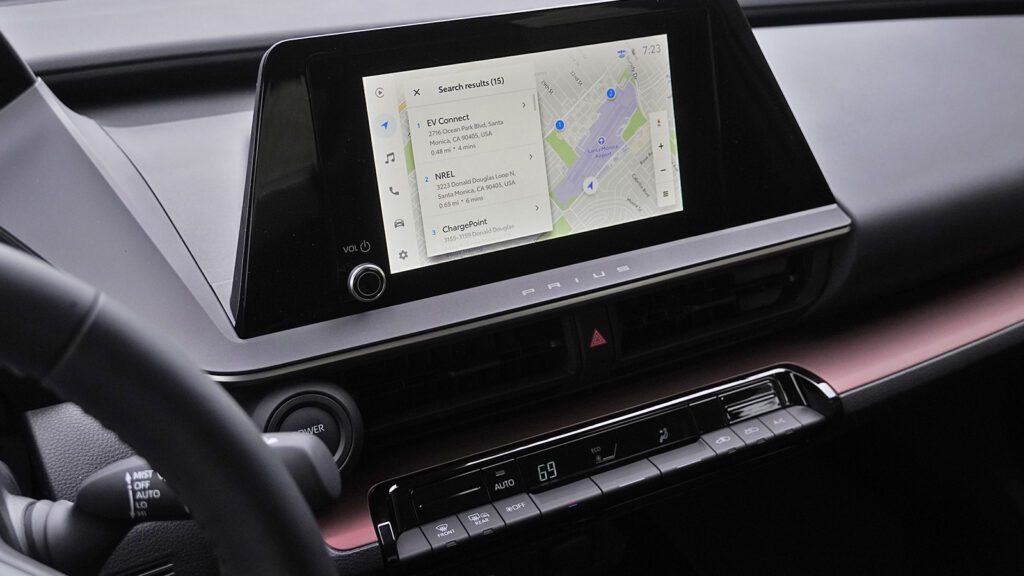
It’s finally Prime Day!
A bit of battery power goes a long way
Slotted in between one of the most ridiculous press loaner schedules of my professional career—as I played car Tetris with a Ferrari 296 GTS, Porsche 911 Dakar, Bentley Continental GTC Azure, and an MV Agusta Dragster America—the Prime was arguably the most important car. And I can admit to feeling a bit of excitement before actually receiving it!
Too excited, maybe, because I promptly ruined the all-electric range without even realizing it by driving straight out to the Valley in full EV mode. A big whoops but a nice lesson on figuring out the toggles and switchgear before blasting through traffic in a plug-in hybrid (while thinking that Toyota had finally solved the hybrid drone sound the whole time). But luckily, I always snag a pic of the odometer when I first get into a press car so I can report my stats and figures for that inaugural drive.

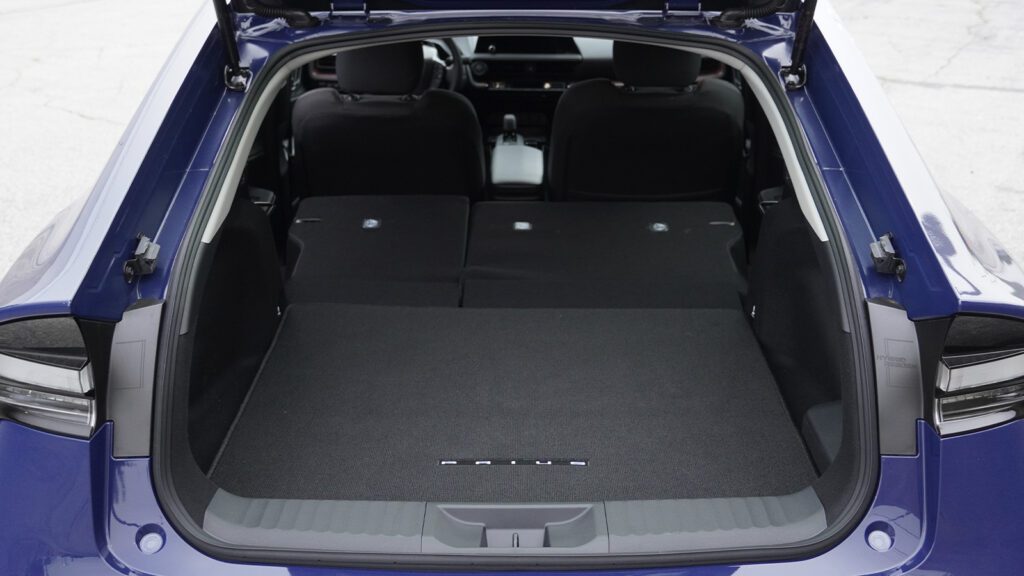

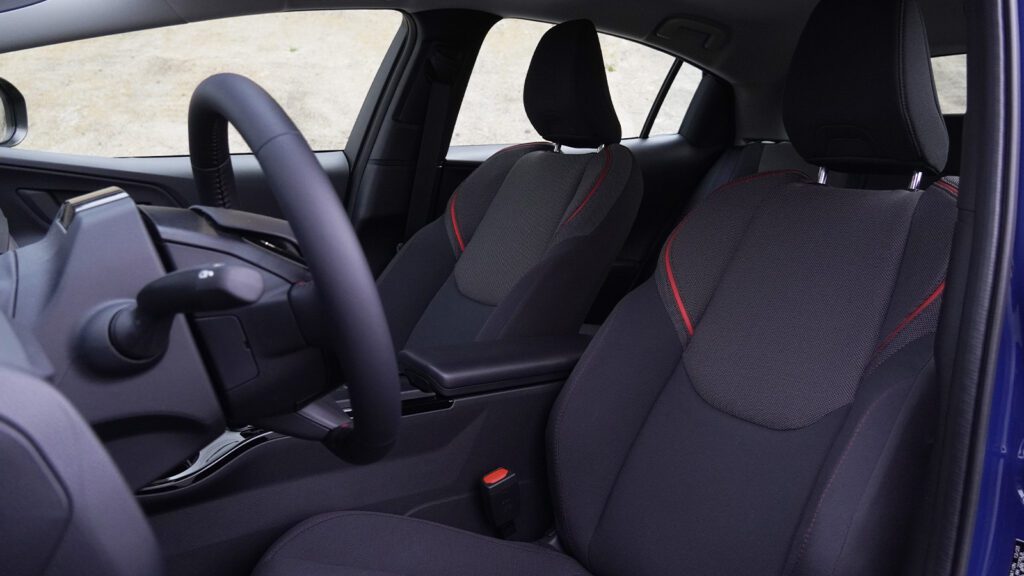

In all, I used 68% of the reported battery capacity to drive 21 entirely unaware all-electric miles. That falls right in line with the claimed EV range of 44 miles, and even better, over the course of that jaunt, the overall combined EV and ICE range actually went up by three miles.
Next, I used the supplied charge cable (housed beneath the rear cargo deck) to plug into a standard 120-volt garage outlet for almost exactly three hours. In that time, the Prime added 33% charge—again, just about spot on for the onboard computer’s prediction of a nine-hour window to fully charge up the petite 13.6-kWh lithium-ion battery. Then I drove 11 more miles in hybrid mode and checked in again to discover that doing so used zero additional percent of battery charge.
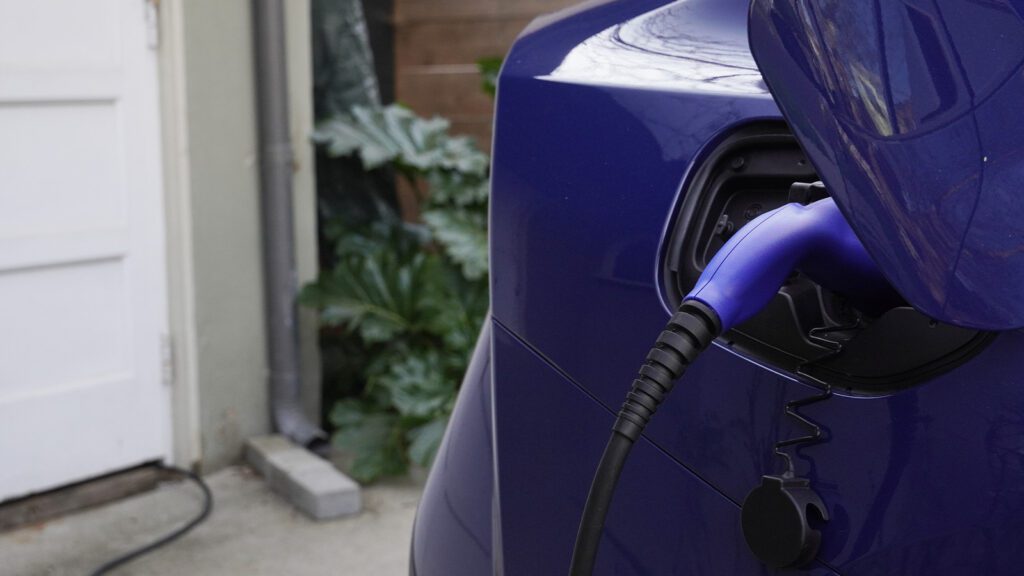
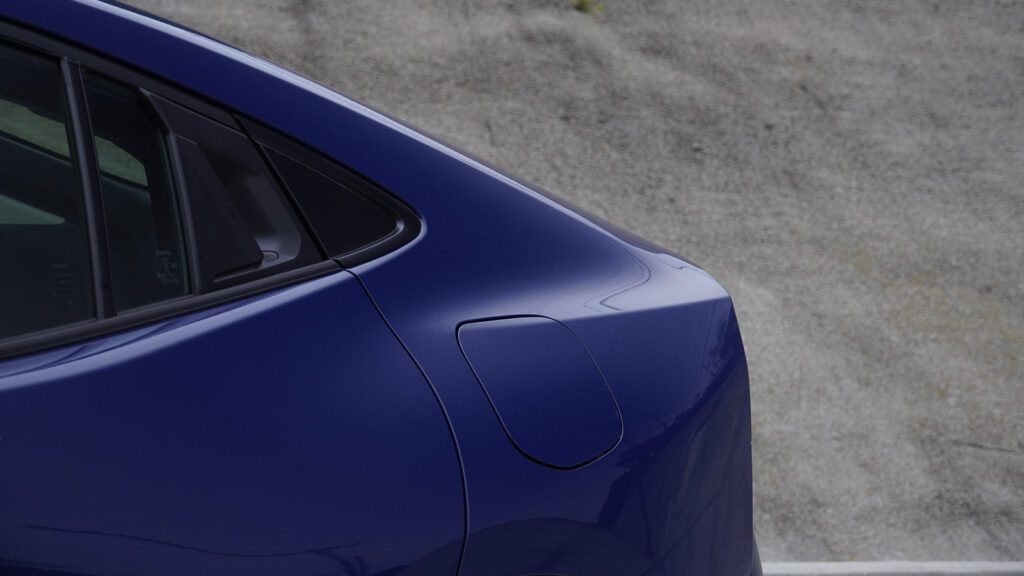
I spent the rest of my time in the Prime trying to max out the hybrid and EV range, but I also pushed a little harder just for fun. More official testing might skew the results, presumably, but so far, Toyota’s engineering seems pretty perfect. Especially considering the typical use case, when commuters might do most of their daily driving in full EV mode and top off the battery at home every night. For longer road trips—after remembering to remember to switch into HV mode—driving over 500 miles per 10.6-gallon tank shouldn’t even require too much hypermiling diligence.
Lower, sleeker, faster, stronger
On the 405 freeway, always a true test of suspension dynamics, the Prime’s lower and tighter suspension definitely produces a bit more rollicking than a second-gen Prius. But then again, in town or on a winding road, the new setup makes most driving much more fun: peppy and quick, with a 220-horsepower combined rating, and the torque delivery is almost full-EV-like given that an electric motor modulates the ICE engine’s power on the way to the e-CVT system. I missed a bit of the hybrid glide path ride quality of earlier Priuses, but I would definitely take those 99 additional ponies versus the previous gen and even some slight torque steer in trade.

Equally as important, this generation seems to include more sound insulation to reduce hybrid drone and wind/tire noise—though speaking of wind, the exterior redesign also finally solves the sailing phenomenon of the second-gen on long highway bends, which was always a truly sketchy sensation.
In terms of nits to pick, the typically frustrating Toyota driver aids still chime and ding incessantly. The fact that the Prime also defaults to EV mode, rather than sticking in hybrid mode after a power cycle, requires a bit more attention than I expected. And relatively slow charging rates limited by the onboard 3.5-kW charger, without Level 3 capability, means that, for example, anyone who does space out and forget to switch into HV mode can’t rectify their mistake particularly quickly.
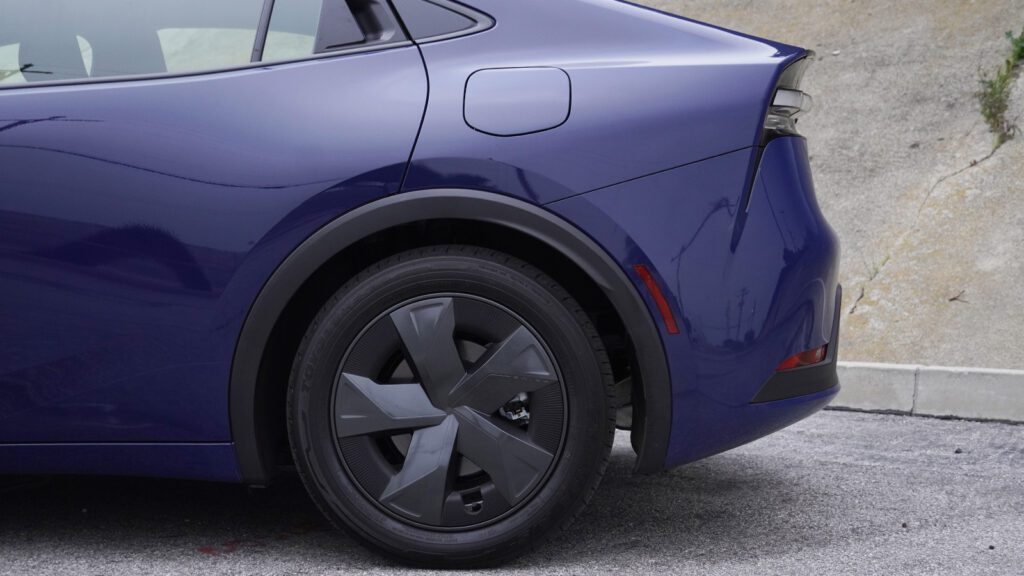
| What’s not? | – Still a hint of hybrid drone – Automatically reverts to full EV mode instead of hybrid – Digital gauges are still small and in a silly location – Naggy driver aid chimes – Slow charging rates, no Level 3 |
Have we reached peak Prius?
Toyota openly wants to stick with hybrids as much as possible in the foreseeable future and only plans to build EVs reluctantly. Much of the argument makes sense since minimizing the use of lithium and other rare earth minerals while maximizing the use case of each individual vehicle will serve both customers and the environment best. Prime stands as a testament to that commitment (as does, considering perhaps a contrapositive, the peculiar Toyota bZ4X and Subaru Solterra situation).
But if government regulations don’t snap back to reality—oh, there goes (the Lucid) Gravity—then Prius may need to go full electric in the near future, as well. All of which means that there’s a solid chance this little blue car might just be peak Prius Prime, the final form of one of the most important and influential automobiles in world history—no exaggeration, truly, despite my obvious penchant for obscene hyperbole.

And this Prime indisputably takes a major leap forward, even if the tech does so slightly less. When a fourth-gen plug-in Prius drops a good chunk below $30,000 on the used market in the next couple of years, even a rear-drive sports car and four-wheel-drive rally racing fanatic such as myself might be tempted. And that is, truly, the greatest compliment I can give.


